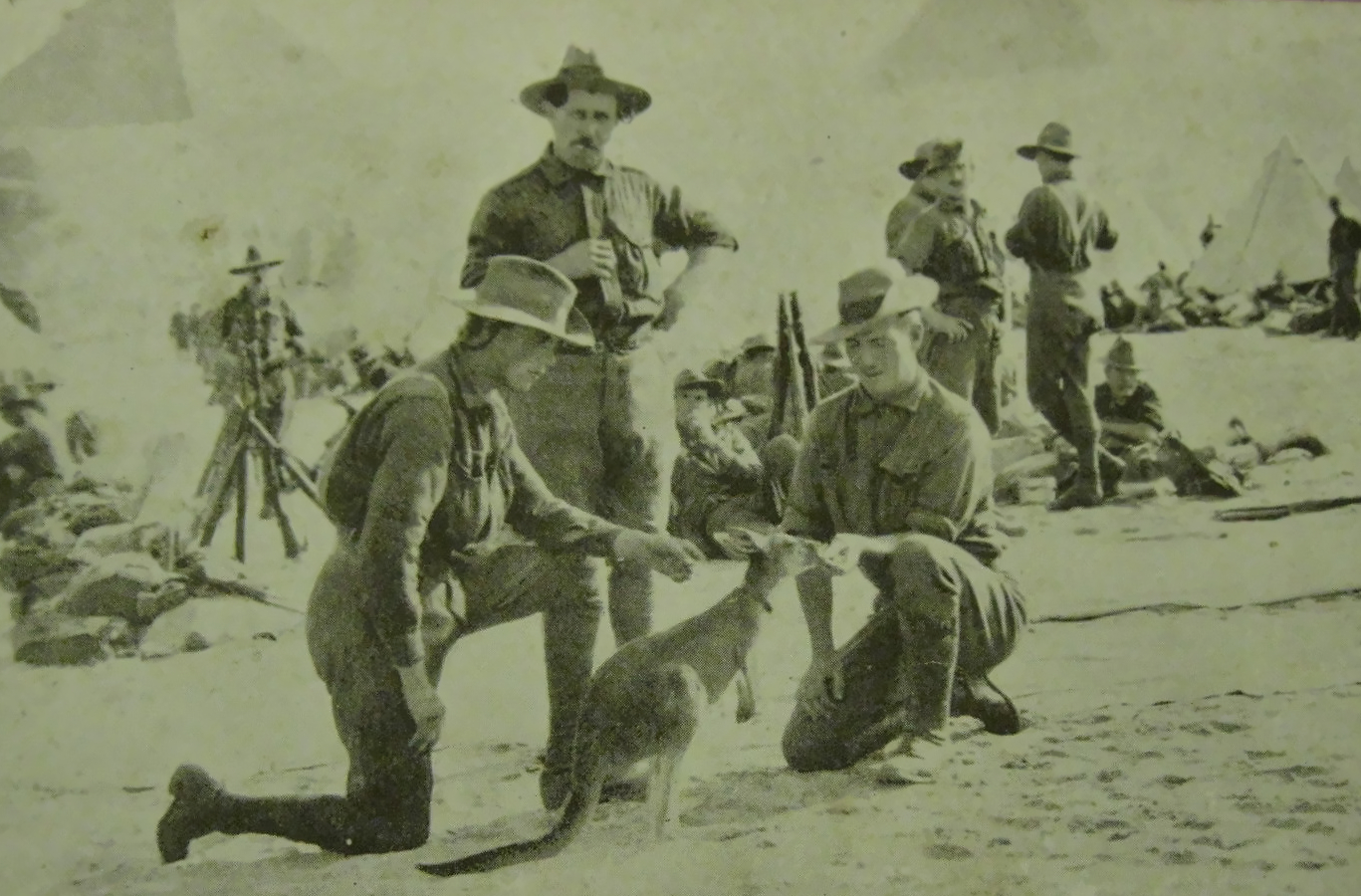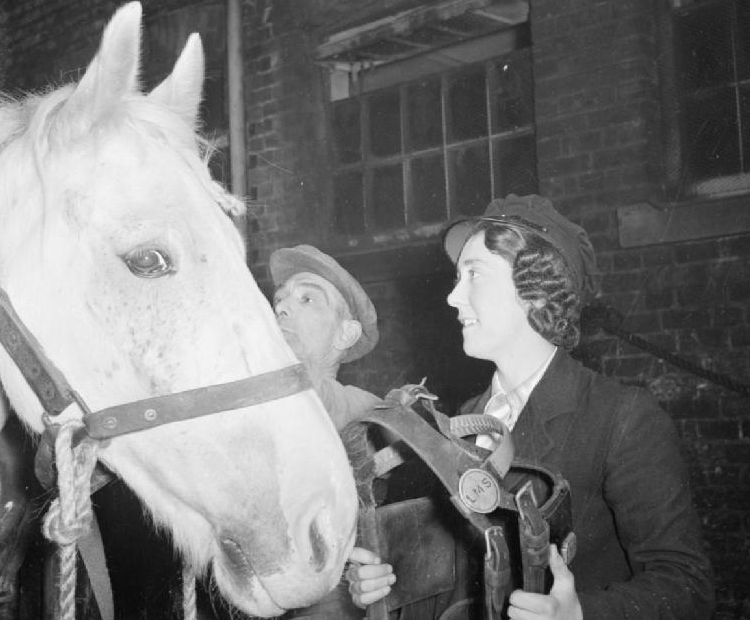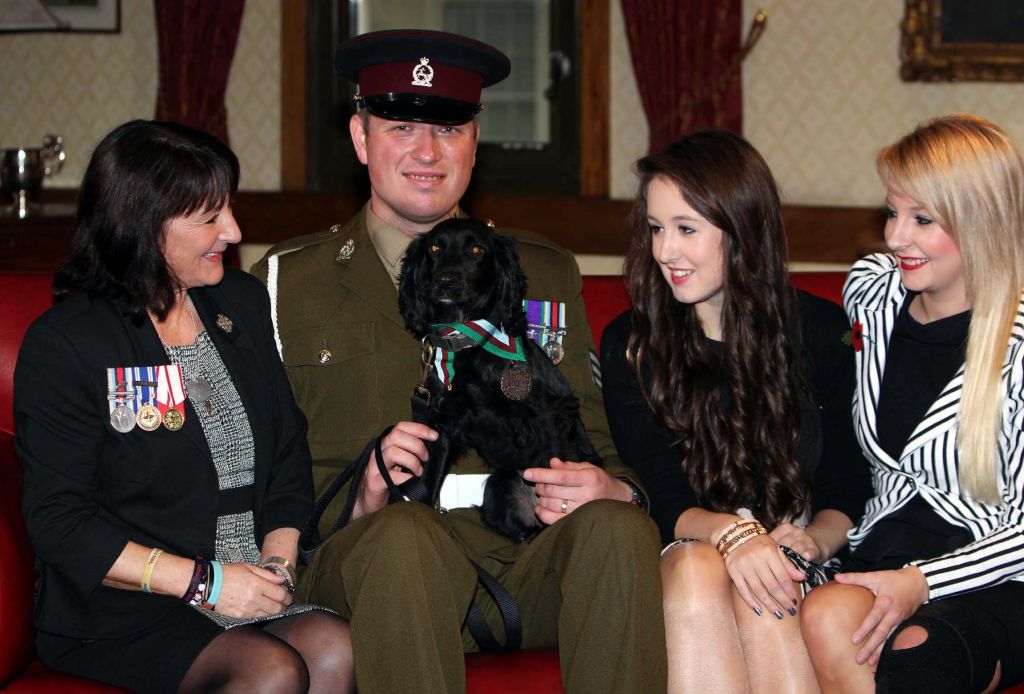Animals In Military History
It's sometimes easy to forget the contributions of animals in military history. They may not understand what's happening around them, but they’ve nevertheless played a crucial role in battle, even in the 20th and 21st centuries. Here are some interesting stories about animals and their role in some of the world’s most influential conflicts.
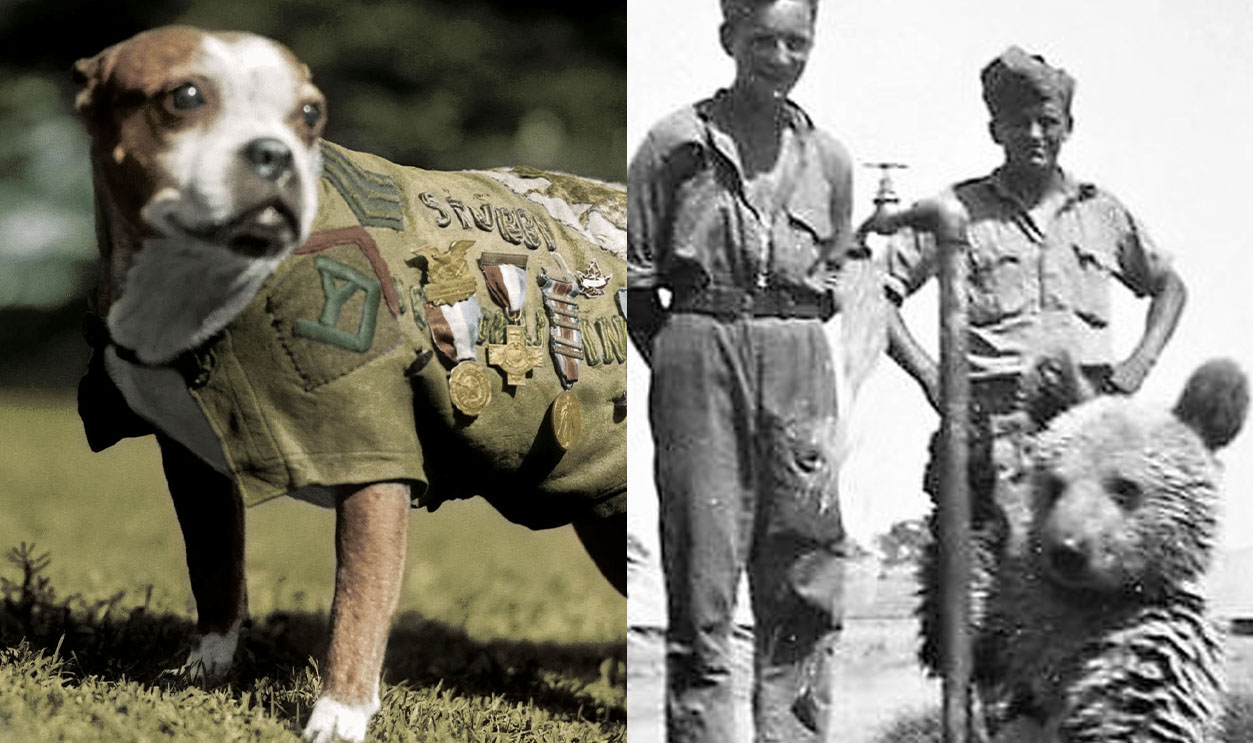
Corporal Jackie The Baboon
During WWI, animals—mostly horses—were used much as they had been in previous conflicts, pulling carts and in cavalry divisions. Corporal Jackie was a baboon and not a conventional military animal—he was a South African officer's pet who became the unit mascot and was injured a number of times in combat. He was trained to salute and attained the rank of corporal and after losing his right arm, he was awarded the Pretoria Citizens Service Medal.
 Unknown Author, Wikimedia Commons
Unknown Author, Wikimedia Commons
White Vision The Pigeon
A female homing pigeon, White Vision served in the National Pigeon Service during WWII. In 1943, after delivering a message from a flying boat wrecked off the coast of Scotland, she was awarded the Dickin Medal for gallantry, an award given exclusively to animals.
 Signal Corps Archive, Wikimedia Commons
Signal Corps Archive, Wikimedia Commons
Rip The Dog
Another recipient of the Dickin Medal, Rip was a mixed-breed terrier who worked in search and rescue during The Blitz in WWII. A stray found in 1940, he is credited with saving over 100 people.
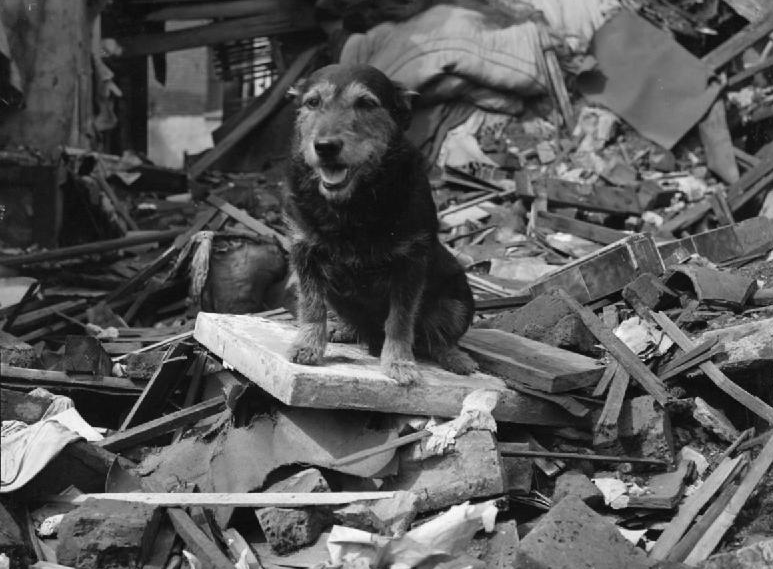 Ministry of Information Photo Division Photographer, Wikimedia Commons
Ministry of Information Photo Division Photographer, Wikimedia Commons
Rob The Dog
During the North African Campaign of WWII, Rob worked with the British Special Air Service (SAS). He was awarded the Dickin Medal after having made over 20 parachute jumps in combat. The story may be fabricated or at least exaggerated, but Rob did serve the SAS with a distinguished record.
 Unknown Author, Wikimedia Commons
Unknown Author, Wikimedia Commons
Kenley Lass The Pigeon
Kenley Lass was the first pigeon to deliver intelligence in German-occupied France during WWII. In October 1940, she parachuted (with a human agent) into France and made the 300 mile flight back to Britain in less than seven hours, carrying crucial information.
The Moose Cavalry
The cavalry is usually an elite force with a nation's military, with horseback officers having a distinct advantage. In the 17th century, the Swedish King Charles XI was said to have a moose-based cavalry due to the expense of importing horses. During the Winter War between Finland and the USSR, the Soviets reportedly utilized moose as cavalry as well.
The United States Camel Corps
In the mid-19th century, the United States Army experimented with the use of camels as pack animals. The camels proved to be well-suited for the work, particularly in the southern United States. However, with the outbreak of the US Civil War, the United States Camel Corps was abandoned, and the animals were sold at auction.
 Rudolph D'Heureuse, Wikimedia Commons
Rudolph D'Heureuse, Wikimedia Commons
Animal Mascots
Australian servicemen routinely brought animals indigenous to Australia with them when they served overseas in WWII. Many kangaroos and koalas found themselves in the thick of things in the Pacific and North African theaters. After WWII, these animals could not be returned because of quarantine laws and were donated to the Cairo Zoo.

History's most fascinating stories and darkest secrets, delivered to your inbox daily.
Other Animals Who Served
Although not remembered by name or as individuals, other animals were used in military history. Canaries and mice were sensitive to gases and served as early-warning systems against gas attacks in WWI. Most spectacularly, military glow worms were used as lights in the trenches in order to read important messages rather than lanterns which might be spotted by the enemy.
Kiri And Many
Kiri and Many were two circus elephants in Germany. After an Allied air raid damaged their home, they worked clearing rubble caused by the air raids. After the German surrender, they continued to work in the rebuilding of Germany.
 Carpenter (Sergeant), Wikimedia Commons
Carpenter (Sergeant), Wikimedia Commons
Wojtek The Bear
Wojtek was a brown bear adopted by the 2nd Polish Corps during WWII. In order to provide for his rations, he was officially enlisted as a private, eventually being promoted to corporal. He participated in the invasion of Italy, serving with distinction, and lived out his post-WWII days in the Edinburgh Zoo.
 Imperial War Museum, Wikimedia Commons
Imperial War Museum, Wikimedia Commons
Horrie The Wog Dog
The unofficial mascot for a battalion of the Second Australian Imperial Force, Horrie the Wog Dog was an Egyptian terrier befriended by an officer stationed in Egypt during WWII. The dog served with the battalion throughout the Middle East. Although it is thought that Horrie was put down by quarantine officials after WWII, there is evidence that Horrie was snuck into Australia.
 Unknown author, Wikimedia Commons
Unknown author, Wikimedia Commons
Jet The Dog
Jet, whose full name was Jet of Iada, was a German Shephard famous for rescuing more than 150 people trapped in buildings during The Blitz. A pedigree dog born in Liverpool, he was awarded the Dickin Medal and the RSPCA's Medallion of Valor for his rescue efforts.
Unsinkable Sam
Oskar, or Oscar as he was known to the British Royal Navy, was nicknamed Unsinkable Sam for surviving the sinking of three ships. Oscar was rescued from the sea after the sinking of the German battleship Bismarck, later serving on the HMS Cossack, which was sunk in 1941. After this, Oscar was transferred to the HMS Ark Royal, which also sank, ending Oscar's naval career. He spent the rest of WWII in an office in Gibraltar.
 Georgina Shaw Baker, Wikimedia Commons
Georgina Shaw Baker, Wikimedia Commons
William Of Orange
Animals can be spies and William of Orange, a pigeon, worked for the British military intelligence service MI14. He successfully delivered a message from the Arnhem Airborne Operation, saving over 2,000 lives in the Battle of Arnhem in September 1944. William of Orange was awarded the Dickin Medal in 1945.
 Unknown Author, Wikimedia Commons
Unknown Author, Wikimedia Commons
Peter The Collie
Peter was awarded the Dickin Medal in 1945. He was a search and rescue dog in London, recuing people trapped in the rubble after air raids. He was presented to the King, Queen, and Princess Elizabeth.
 Unknown Author, Wikimedia Commons
Unknown Author, Wikimedia Commons
Scotch Lass
Scotch Lass was a carrier pigeon who accompanied a British agent on a mission to the Netherlands. She was tasked with delivering crucial photos to Britain when she was injured flying into telegraph wires. She nevertheless carried on, making it back to Britain and was later awarded the Dickin Medal.
 Joseph Krol, CC BY-SA 3.0, Wikimedia Commons
Joseph Krol, CC BY-SA 3.0, Wikimedia Commons
Judy The Dog
Judy was a pointer who served on the HMS Gnat and Grasshopper ships in the Pacific theater. Her ability to hear incoming aircraft proved valuable. When the Grasshopper was sunk, Judy and other human survivors were stranded on an island where Judy helped locate drinkable water, saving countless lives.
 Unknown author, Wikimedia Commons
Unknown author, Wikimedia Commons
Punch And Judy
Punch and Judy were a pair of boxers who served in British Palestine in 1946. They were awarded the Dickin Medal for warning British officers and attacking an armed insurgent. Both Punch and Judy were injured in the attack but both survived.
 Unknown Author, Wikimedia Commons
Unknown Author, Wikimedia Commons
Tich The Dog
A mascot of the King's Royal Rifle Corps, Tich saw much action during WWII. She was awarded the Dickin Medal and lived out her post-WWII life with her handler in the UK.
 Acabashi, CC BY-SA 4.0, Wikimedia Commons
Acabashi, CC BY-SA 4.0, Wikimedia Commons
Simon The Cat
Simon served on the Royal Navy ship HMS Amethyst after WWII. During the Yangtze Incident on the Yangtze River in 1949, Simon survived injuries from an artillery shell and saved the ship from a rat infestation.
Winnipeg The Bear Cub
Canadian Lieutenant Harry Colebourn purchased a bear cub in 1914, naming her after his adopted hometown. She became his unit's mascot and during WWI, Winnie traveled to Europe with them. She was donated to the London Zoo where author Alan Alexander Milne and his son Christopher saw her, and she became the inspiration for Milne’s Winnie the Pooh stories.
Tirpitz The Pig
Tirpitz was a pig on the German SMS Dresden, which was damaged in WWI and skuttled, leaving Tirpitz alone on the abandoned ship. She swam away and was rescued by the British HMS Glasgow, where they awarded her a hand-made Iron Cross. She served as the Glasgow's mascot until retirement in 1916.
 Royal Navy official photographer, Wikimedia Commons
Royal Navy official photographer, Wikimedia Commons
Warrior The Horse
During WWI, Captain Jack Seely of the British Expeditionary Force had a horse named Warrior. The two served throughout WWI, seeing much action in the fierce battles on the Somme and at Ypres. They lead the Canadian Cavalry Brigade during the Battle of Moreuil Wood in March 1918, the last major offensive of WWI. Warrior survived WWI, nicknamed “the horse the Germans could not kill”.
 Michael Garlick, CC BY-SA 2.0, Wikimedia Commons
Michael Garlick, CC BY-SA 2.0, Wikimedia Commons
Regal The Horse
Regal was a bay horse who served in WWII in London. In 1941 during the Blitz, his stable was destroyed, and he was able to maintain his composure. He served throughout WWII in all sorts of conditions.
 Royal collection of the United Kingdom, Picryl
Royal collection of the United Kingdom, Picryl
Olga The Horse
Olga was a bay mare used for crowd control and rescue operations during WWII. In 1944, while she was on duty, there was an explosion nearby and Olga remained calm and aided in transporting survivors and diverting crowds from getting too close to the damaged area.
Upstart The Horse
Upstart was a chestnut horse who served during WWII. After surviving an attack on his stables, Upstart patrolled the streets of London. Wounded during another air raid, Upstart remained unfazed and directed traffic and crowds, even while injured.
 USMC photographer, Wikimedia Commons
USMC photographer, Wikimedia Commons
Sergeant Reckless
A carrier horse for the United States Marine Corps during the Korean conflict, Sergeant Reckless was wounded twice in battle and served during the Battle for Outpost Vegas in 1953. She made countless trips to the front (51 in one day), carrying equipment to the combat zone and the wounded back to camp.
 Andrew Geer or another member of United States Marine Corps, Wikimedia Commons
Andrew Geer or another member of United States Marine Corps, Wikimedia Commons
Gander
A Newfoundland dog, Gander was the mascot for the Royal Rifles of Canada during WWII. He was slain in action during the Battle of Hong Kong in 1941. He met a heroic end, picking up a grenade that had been thrown by the enemy and then rushing toward them, saving several injured Canadian soldiers with his sacrifice. Gander was posthumously awarded the Dickin Medal in 2000.
Apollo The Dog
Apollo was a search and rescue dog for the NYPD. For his work during the September 11, 2001 attacks on the World Trade Center, Apollo was awarded the Dickin Medal.
Sadie The Dog
Sadie, a black Labrador Retriever, was awarded the Dickin Medal for detecting an explosive device outside the United Nations headquarters in Kabul in November 2005. She was awarded the medal by Princess Alexandra.
 Golden Retriever - Labrador, Flickr
Golden Retriever - Labrador, Flickr
Theo The Dog
Theo was an English Springer Spaniel who was an explosive detection dog for the British stationed in Afghanistan. Theo and his handler Lance Corporal Liam Tasker had set a record for explosives found during their deployment. When Lance Corporal Tasker was lost in action, Theo passed away only a few hours later, from an unexpected seizure.
Lucca The Dog
A German Shepherd/Belgian Malinois mix, Lucca was a service dog with the United States Marine Corps for six years. Trained to detect explosives, she was deployed to Iraq and Afghanistan where she was injured by an IED blast, losing a leg. She retired in 2012 and lived with her handler Gunnery Sergeant Chris Willingham.
 Cpl. Jennifer Pirante, Wikimedia Commons
Cpl. Jennifer Pirante, Wikimedia Commons
Kuga
Kuga was a male Belgian Malinois military dog serving with the Australian Army in Afghanistan. While on patrol in Khas Urozgan District, Kuga was shot five times while grasping an insurgent fighter with his mouth. He was posthumously awarded the Dickin Medal.
Hertz
Hertz is a German Shorthaired Pointer and born in Croatia. He worked with the Royal Air Force after being noticed for his skills in drug detection. Hertz was trained as the first British military dog ever to be trained in the art of detecting electronic communications equipment, serving with the Royal Air Force in Afghanistan in the 2010s. He is now retired.
Sasha The Dog
Sasha was a Labrador Retriever who served as an explosive detection dog for the British Army in Afghanistan. Sasha and her handler, Lance Corporal Kenneth Rowe, were both lost on July 2008 and Sasha was awarded the Dickin Medal.
Bing
Bing The Dog was an Alsatian-Collie cross who was trained at the Army War Dog Training School during WWII. Bing parachuted over Normandy on D-Day and was later wounded in action. He worked locating and protecting military personnel.
Duke Of Normandy
Duke of Normandy was a pigeon who was the first bird to arrive back with a message from the paratroops of the 21st Army Group on D-Day. He received the Dickin Medal in 1947.
 Royal Air Force official photographer, Wikimedia Commons
Royal Air Force official photographer, Wikimedia Commons
Sergeant Stubby
A mascot for the American infantry unit during WWI, Sergeant Stubby served for 18 months, participating in 17 battles on the Western Front. He saved his unit from gas attacks, located wounded officers, and caught a German, holding him by the seat of his pants. The most decorated dog of WWI, Stubby was promoted to sergeant and when he passed in 1926, his remains were kept at the Smithsonian Institution. In 2018, the heroic little dog was the subject of an animated film, Sgt. Stubby: An American Hero.
 Harris & Ewing, Wikimedia Commons
Harris & Ewing, Wikimedia Commons




